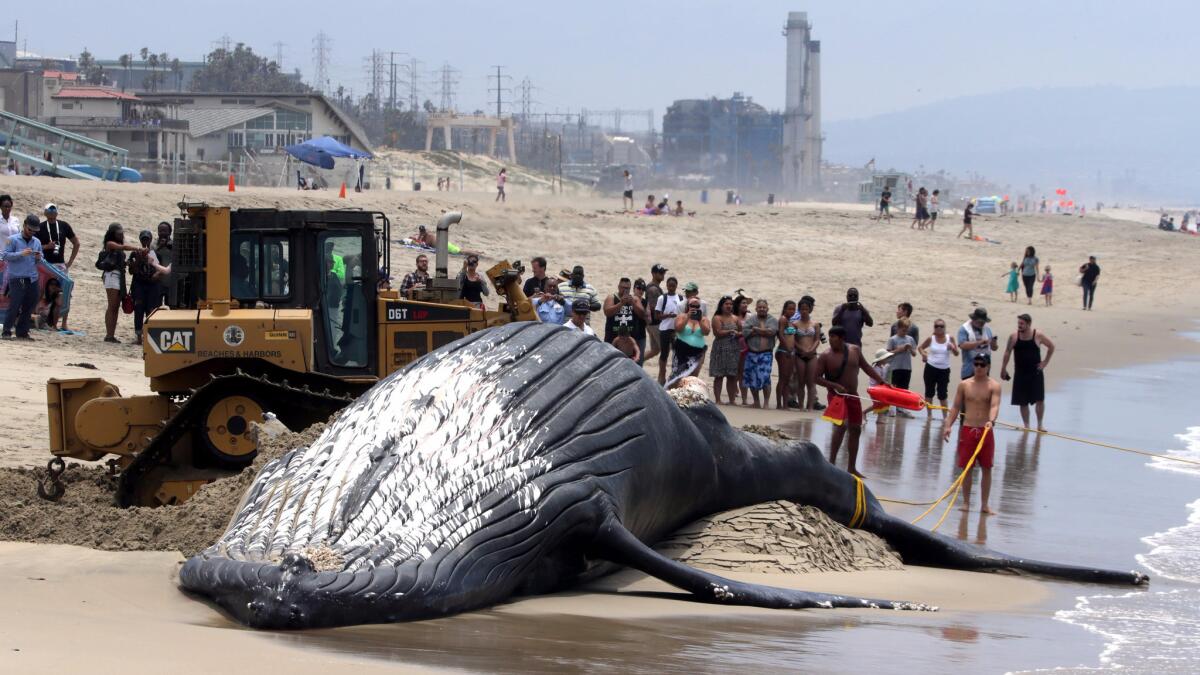Wally the whale was actually a girl

- Share via
Marine wildlife experts say they have yet to discover what killed Wally — the 22-ton humpback whale who washed ashore in Los Angeles last week — but they say one thing is for certain.
Wally was really a girl.
As the fisheries division of the National Oceanic and Atmospheric Administration continues to investigate the humpback’s death, as well as that of a second whale that washed ashore near Port Hueneme on Monday, NOAA officials set the record straight on Wally’s gender.
What had initially appeared to be an enlarged male sexual organ that was plainly visible to scores of beach-goers was, in fact, just the opposite.
“On further examination of photographs later in the day Friday we determined that Wally the humpback whale was actually a female,” NOAA Fisheries spokesman Michael Milstein wrote in an email Tuesday. “It turns out that was part of the vaginal wall protruding through the genital slit.”
Wally had been tagged and named by NOAA Fisheries in August and was repeatedly identified as a male by officials.
When Wally washed ashore at Dockweiller State Beach late Thursday, the dead cetacean threatened to disrupt a long Fourth of July weekend. A pair of Los Angeles County lifeguard boats towed Wally out to sea Friday evening.
Before towing the giant mammal away, however, researchers removed tissue samples from the creature. The samples may “narrow down the possibilities” on what killed Wally, but it was unclear whether it could provide the exact cause of death, Milstein said.
The decomposing whale at Port Hueneme Beach was likely a humpback whale as well, Milstein said.
Although the two whales washed onto Southern California beaches just days of each other, Milstein said the deaths were unrelated. Humpback whales, he said, were not dying at a greater rate than usual.
Instead, their appearance owed more to a recent increase in onshore winds. “They may be bringing more of these animals to shore than in other conditions,” Milstein said.
Email: alexia.fernandez@latimes.com
Twitter: @alexiafedz
Email: joseph.serna@latimes.com
Twitter: @JosephSerna
More to Read
Sign up for Essential California
The most important California stories and recommendations in your inbox every morning.
You may occasionally receive promotional content from the Los Angeles Times.














